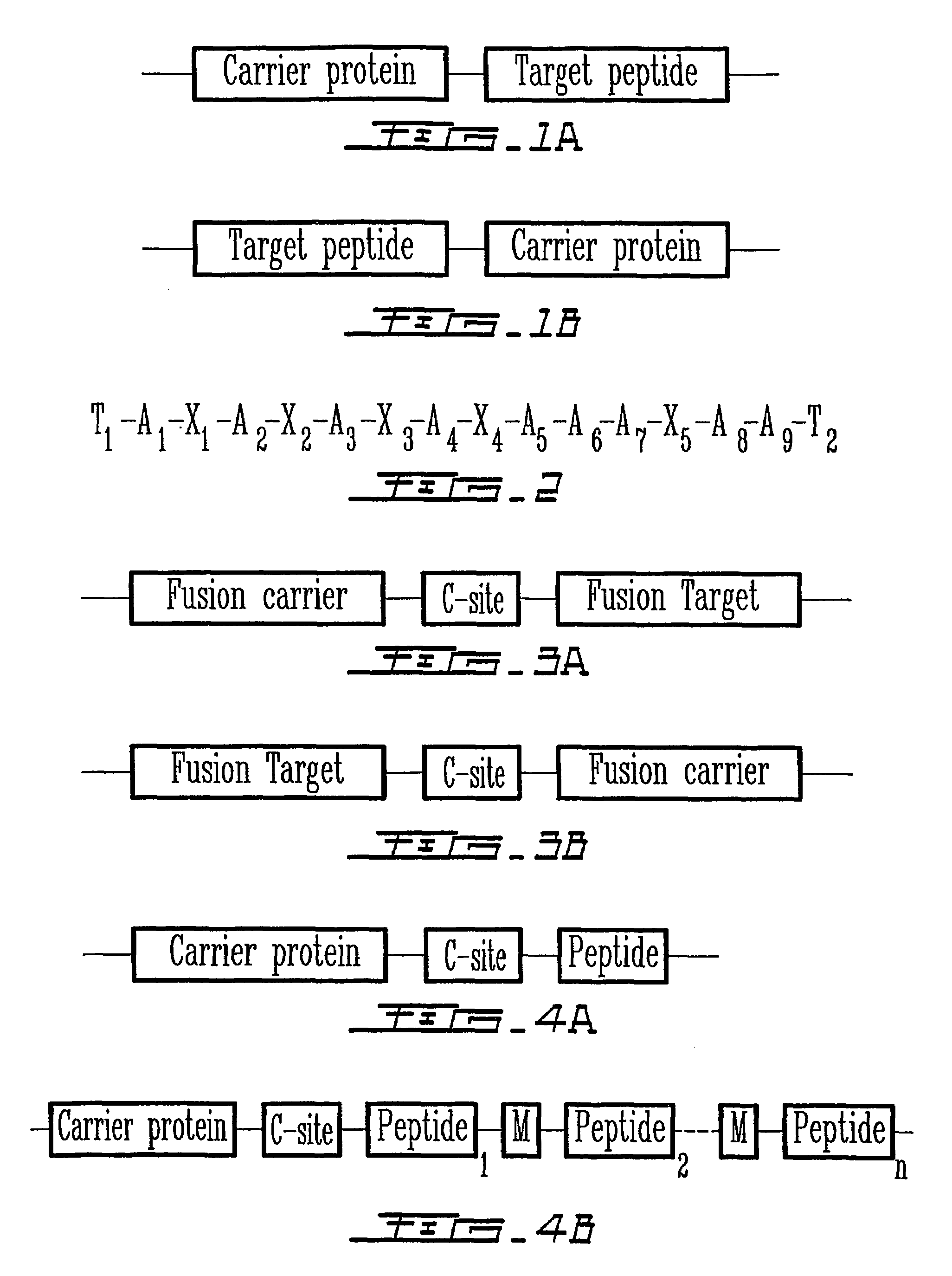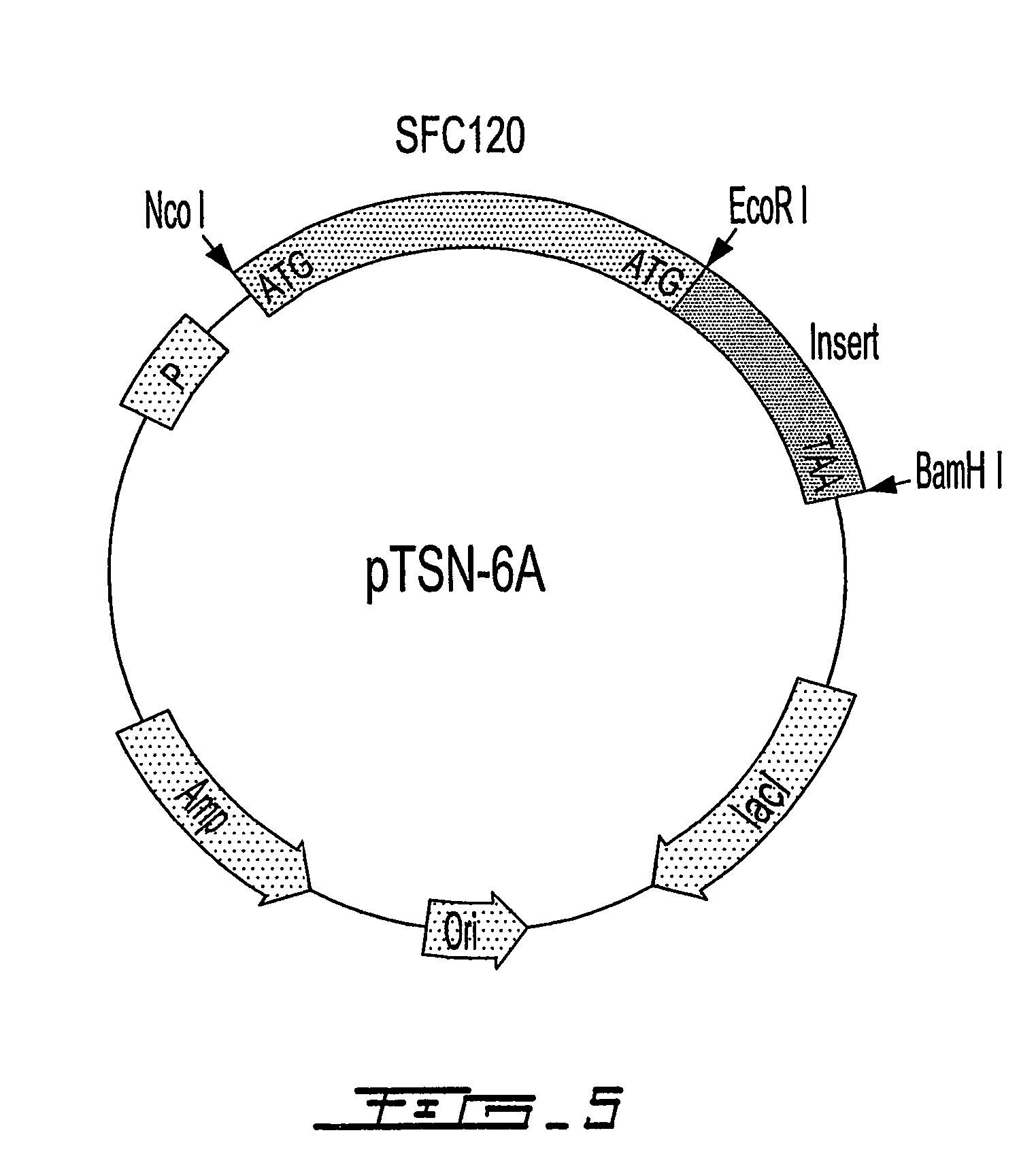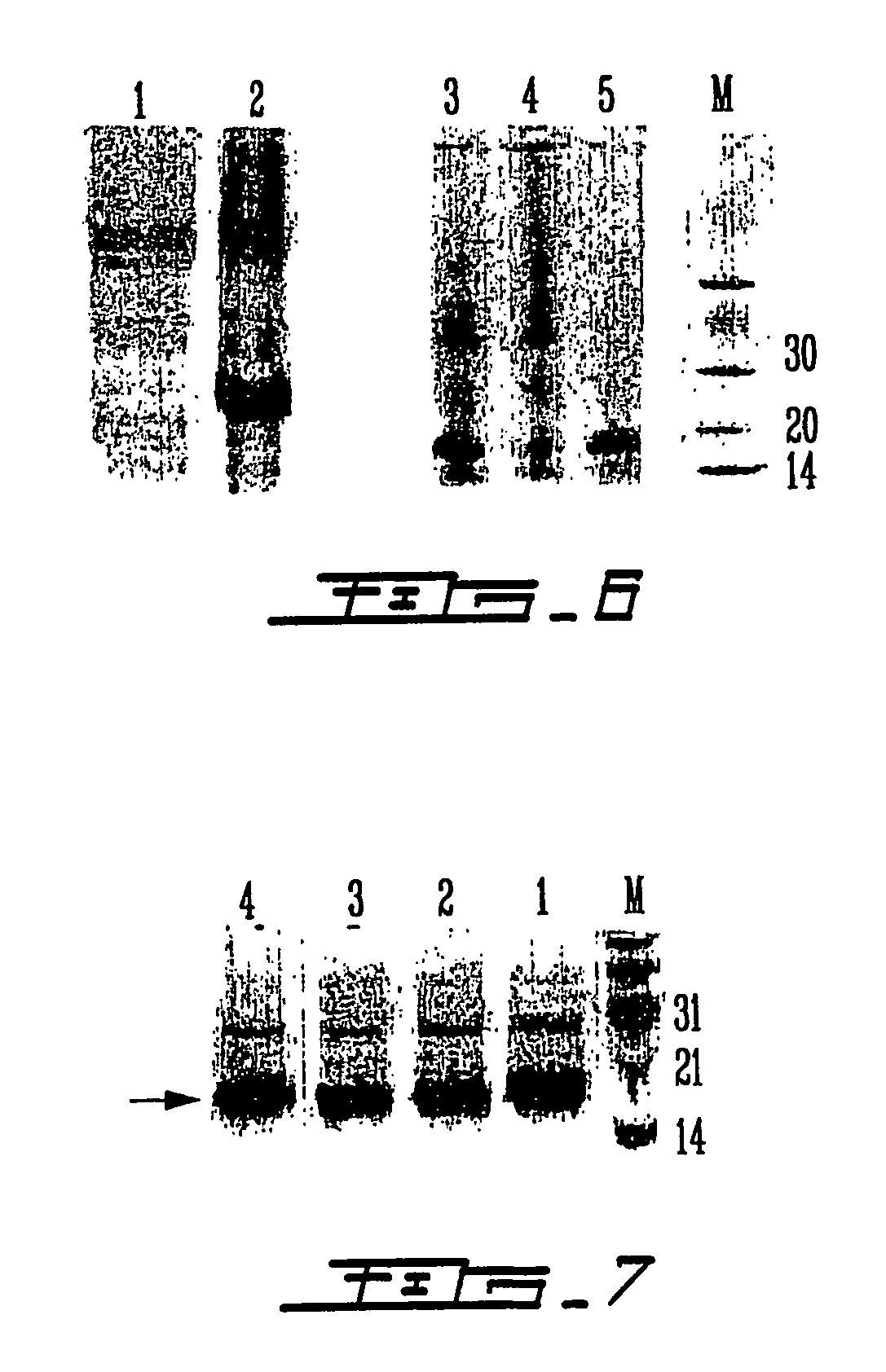Staphylococcal nuclease fusion proteins for the production of recombinant peptides
a technology of staphylococcal nuclease and fusion proteins, which is applied in the direction of peptides, polypeptides with his-tags, organic chemistry, etc., can solve the problems of unviable and/or prohibitively high cost of synthetic peptides, and the sup>2/sup>h for nmr studies is practically impossible for larger peptide fragments, so as to facilitate the removal and not complicate the subsequent steps of peptid
- Summary
- Abstract
- Description
- Claims
- Application Information
AI Technical Summary
Benefits of technology
Problems solved by technology
Method used
Image
Examples
example 1
Construction of Expression Vector pTSN1
[0105]A bacterial expression vector that encodes a fusion protein was constructed. The vector contains a sequence for a gene encoding the N-terminal nucleotide binding domain of staphylococcus nuclease, designated SFC120 (SEQ ID NO:14) and used as the carrier protein, linked to a sequence encoding a cleavage site and a sequence encoding a target peptide. The vector construct, pTSN1, was prepared in several steps as described below.
[0106]First, the nuclease gene was amplified from the staphylococcus aureus genome. A 500 base-pairs Nco I / BamH I fragment was produced by PCR reaction with two primers. Primer 1 (Nco) was used to create one Nco I site at the beginning of the gene, which has one ATG start codon. Primer 2 (BamH) was used to create one BamH I site just after the stop codon (TAA or TGA or TAG). Following the PCR reaction, the reaction mixture was immediately digested with Nco I and BamH I restriction enzymes. The new fragment was in turn...
example 2
Construction of Expression Vector pTSN-6A
[0109]In order to control the expression of the fusion protein tightly, the SFC gene of pTSN1 was moved into an expression vector (such as pET vectors) with T4 bacteriophage T7 promoter. The DNA sequence of SFC120 was amplified by standard PCR methods while the restriction enzyme site of Nco I was generated in the 5′-end and the two restriction sites of EcoR I and BamH I were generated in the 3′-end. The PCR product was double-digested with Nco I and BamH I, and ligated into the pET15M vector, which was modified from the pET-15b vector (Novagen) by removing the EcoR I site. The constructed fusion vector was defined as pTSN-6A (FIG. 5). In FIG. 5, P denotes the promoter, either T7 or Trc. His-tag with six histidines can be placed at either N-terminal or C-terminal side of the SFC120 carrier protein to simplify the purification step.
example 3
Construction of Expression Vector pHSN-M65L
[0110]Residue Met65 of SFC120 encoded in plasmid pTSN-6A was mutated into Leu by sited-directed mutagenesis. Site-directed mutagenesis was carried out in a Perkin-Elmer Thermocycler™ essentially by the PCR method with some modification from the protocol of QuikChange™ Site-Directed Mutagenesis Kit. The basic procedure utilizes a supercoiled, double-stranded DNA (dsDNA) vector with an insert of interest and two synthetic oligonucleotide primers containing the desired mutation. The Pfu DNA polymerase replicates both plasmid strands with high fidelity and without displacing the mutant oligonucleotide primers. The oligonucleotide primers, each complementary to opposite strands of the vector, extend during temperature cycling by the Pfu DNA polymerase. On incorporation of the oligonucleotide primers, a mutated plasmid containing staggered nicks is generated. Following temperature cycling, the product is treated with Dpn I to select for mutation-...
PUM
| Property | Measurement | Unit |
|---|---|---|
| pH | aaaaa | aaaaa |
| pH | aaaaa | aaaaa |
| flow rate | aaaaa | aaaaa |
Abstract
Description
Claims
Application Information
 Login to View More
Login to View More - R&D
- Intellectual Property
- Life Sciences
- Materials
- Tech Scout
- Unparalleled Data Quality
- Higher Quality Content
- 60% Fewer Hallucinations
Browse by: Latest US Patents, China's latest patents, Technical Efficacy Thesaurus, Application Domain, Technology Topic, Popular Technical Reports.
© 2025 PatSnap. All rights reserved.Legal|Privacy policy|Modern Slavery Act Transparency Statement|Sitemap|About US| Contact US: help@patsnap.com



